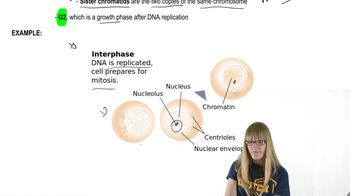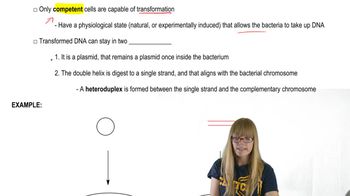Here are the essential concepts you must grasp in order to answer the question correctly.
Chromatin Structure
Chromatin is a complex of DNA and proteins found in the nucleus of eukaryotic cells. It exists in two forms: euchromatin, which is loosely packed and accessible for transcription, and heterochromatin, which is tightly packed and less accessible. During cell division, chromatin condenses to form visible chromosomes, making it essential to understand how this transition occurs to grasp the derivation of mitotic chromosomes.
Recommended video:
Mitosis
Mitosis is the process of cell division that results in two genetically identical daughter cells, each with the same number of chromosomes as the parent cell. It involves several stages: prophase, metaphase, anaphase, and telophase, during which chromatin condenses into distinct chromosomes. Understanding mitosis is crucial for recognizing how chromatin transforms into chromosomes and how genetic material is accurately distributed.
Recommended video:
Experimental Evidence
The derivation of mitotic chromosomes from chromatin is supported by various experimental techniques, such as microscopy and biochemical assays. These methods have demonstrated that during mitosis, chromatin undergoes structural changes, leading to the formation of chromosomes. Observations of chromatin behavior during cell division provide critical insights into the relationship between chromatin and chromosomes.
Recommended video:
 Verified step by step guidance
Verified step by step guidance Verified video answer for a similar problem:
Verified video answer for a similar problem:

